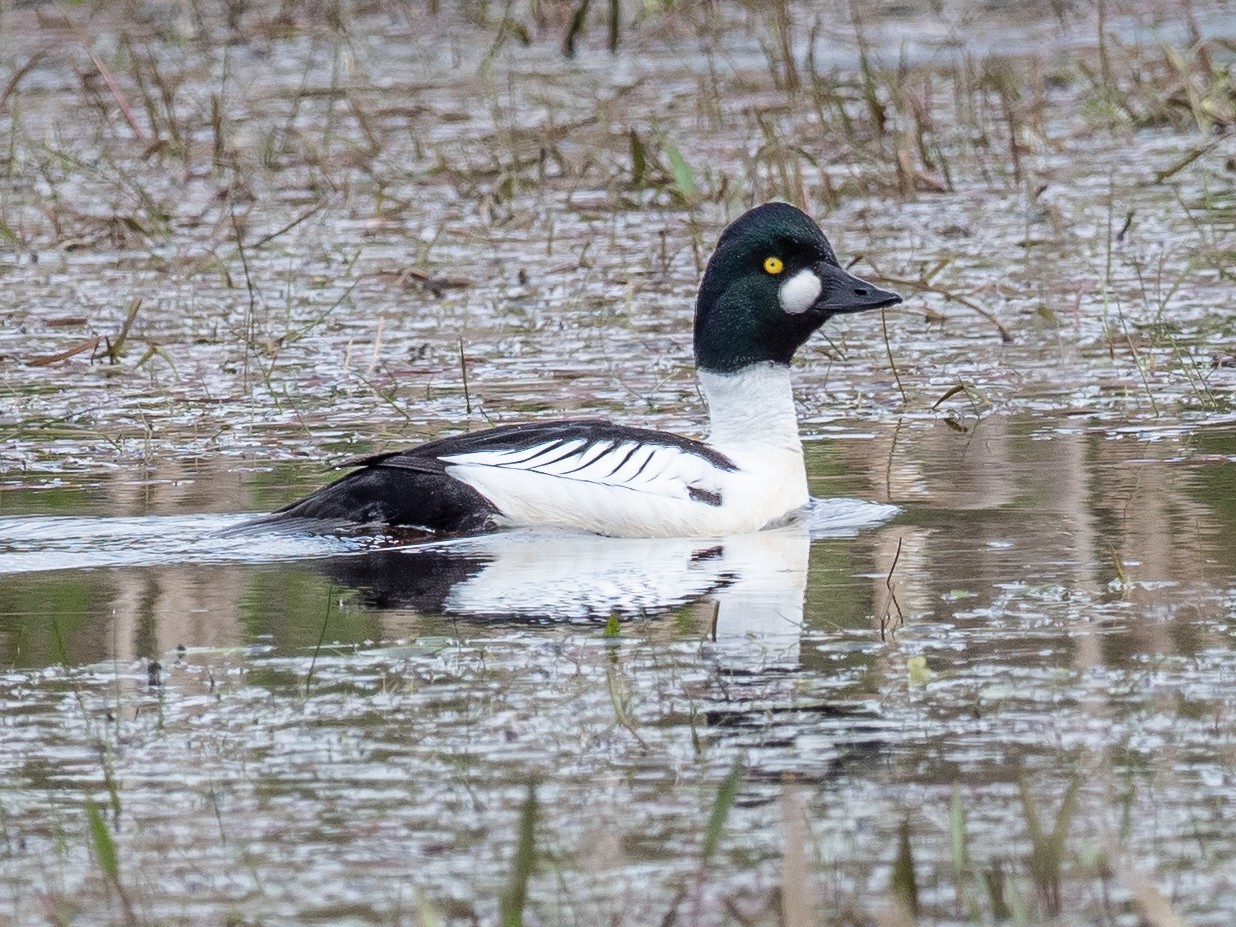Common Goldeneye
A species of Goldeneyes, Also known as Butterball Scientific name : Bucephala clangula Genus : Goldeneyes
Common Goldeneye, A species of Goldeneyes
Also known as:
Butterball
Botanical name: Bucephala clangula
Genus: Goldeneyes
Content
Description People often ask General Info
Description
The common Goldeneye has bright-colored eyes which give this duck its occasional name of 'Common Goldeneye'. The duck dives for food in rivers, lakes, and along the coast searching for fish and invertebrates. It builds its nest in tree cavities to protect the young from predators, but gardeners can build nesting boxes to attract breeding pairs to their yards.
Size
41 - 51 cm
Colors
Black
Green
White
Life Expectancy
17 years
Nest Placement
Cavity
Clutch Size
4 - 9 eggs
Number of Broods
27 - 33 days
Feeding Habits
Common Goldeneye predominantly consume aquatic invertebrates, fish, and vegetation. Year-round, their diet consists of about 32% crustaceans, 28% aquatic insects, and 10% molluscs. They dive to forage, primarily in shallow waters, but can also feed in deeper areas. While nesting, insects are their main food, and during migration and winter, they focus on crustaceans. Fish eggs and plants like pondweed seeds also contribute to their diet. They can outcompete other ducks for food.
Habitat
Common Goldeneye inhabit boreal forests for breeding, with a preference for tree cavity nests near clear lakes and rivers. They thrive in cold climates across extensive taiga regions and adapt to a range of altitudes. Winter habitats comprise sheltered coastal areas and ice-free inland waters, important for foraging on aquatic invertebrates.
Nest Behavior
Common Goldeneye females select and return to nesting sites yearly, using available materials for construction. Egg-laying and parental care specifics are consistent with cavity-nesting birds.
Nest Characteristics
Common Goldeneye's typical nests are cavities in live or dead trees or nest boxes with dark interiors, lined with wood shavings and down feathers. They average 8 inches across and lie 8-47 inches deep.
Dite type
Aquatic invertebrate eater
People often ask
General Info
Feeding Habits
Bird food type
Bird Feeder Type

Platform
Behavior
Common Goldeneye exhibit robust and agile flying capabilities, reaching speeds over 40 mph accompanied by a distinct whistling from their wings. Notably adept at taking off, they require minimal 'pattering' on water. These sociable birds often form flocks, engaging in synchronized diving, with dives lasting up to one minute in pursuit of prey. During winter, common Goldeneye showcase a series of complex courtship rituals, leading to monogamous pairs that dissolve after egg incubation commences. Territorial behavior surfaces on breeding grounds, with males defending mates aggressively. Parenting largely falls on females, who fiercely protect their ducklings.
Species Status
The common goldeneye is one of the species to which the Agreement on the Conservation of African-Eurasian Migratory Waterbirds (AEWA) applies. Approximately 188,300 common goldeneyes were killed annually by duck hunters in North America during the 1970s, representing slightly less than 4% of the total waterfowl killed in Canada during that period, and less than 1% of the total waterfowl killed in the US. Both the breeding and winter habitat of these birds has been degraded by clearance and pollution. However, the common goldeneye in North America is known to derive short-term benefits from lake acidification. 
